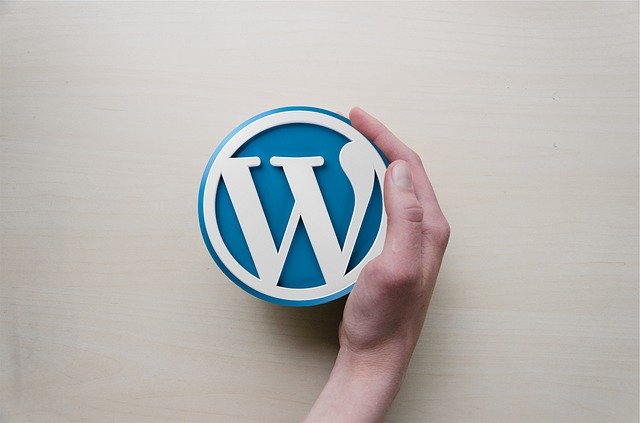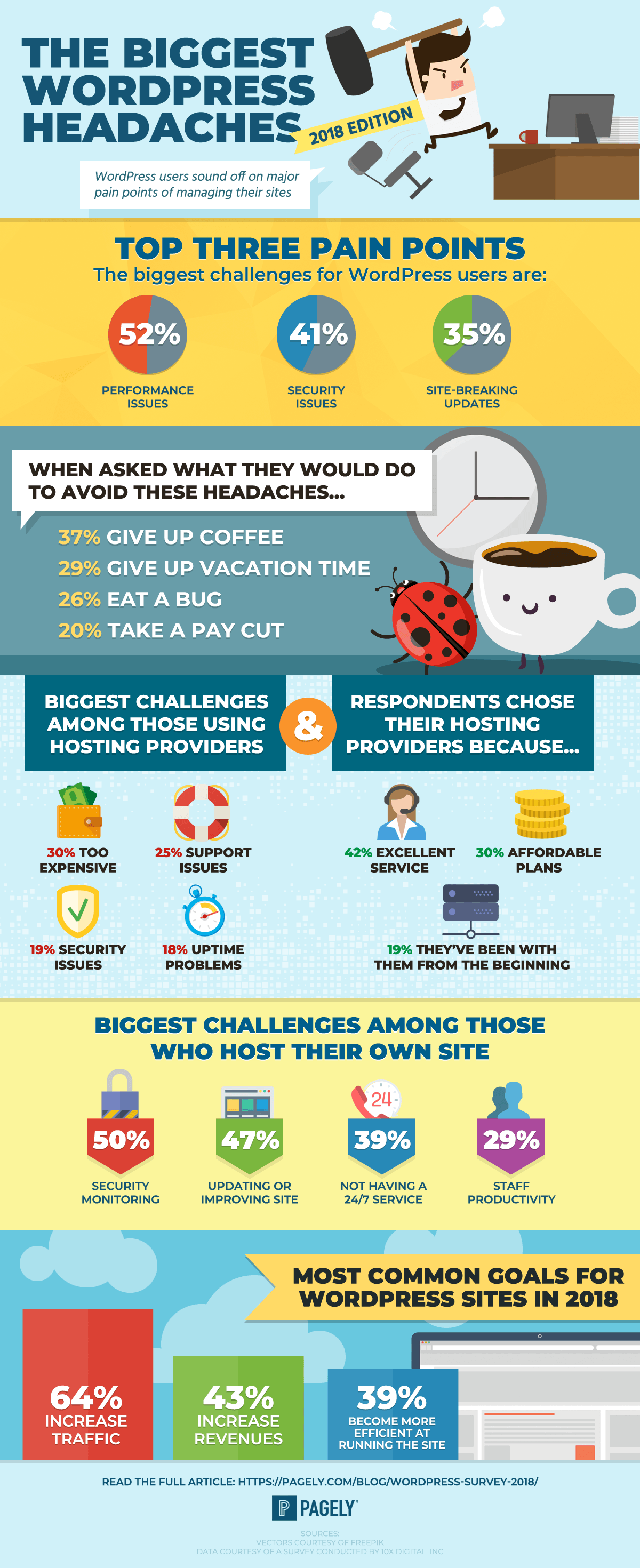
Aug 13, 2020 | WordPress Maintenance
On Tuesday the WordPress core team released version 5.5 of WordPress core.
This release is the start of the WordPress jQuery library migration strategy. Much of WordPress itself, plugins and themes is based on this vital jQuery library.
Our take at OnSiteWP is that plugin and theme developers who have not taken a proactive role in testing their software with pre-releases of WordPress 5.5 were caught by surprise. The result is there have been some compatibility problems with the WordPress 5.5 release.
Because of this, and the value that OnSiteWP places on website stability, we have decided to postpone the WordPress 5.5 update for sites managed by our OnSiteWP maintenance service.
It is our expectation that plugin and theme authors will act quickly to bring their code up to the new WordPress 5.5 way of doing things. We will be evaluating compatibility on our test servers and upgrade clients to version 5.5 as soon as we have confidence that the plugin authors are ready. (probably next week)
More information about the WordPress jQuery migration plan can be found at the WpTavern blog.

Apr 27, 2020 | WordPress Maintenance
The support specialists at OnSiteWP monitor several popular WordPress plugins.
Many of our business customers are using WooCommerce. This makes WooCommerce a very important plugin for us.
Unfortunately WooCommerce has a history of software problems with their plugin releases. Because of this mixed track record of quality, we delay WooCommerce updates for our WordPress Maintenance customers until a x.y.1 version is released. (or x.y.2 if things are really bad)
In our opinion, it is better for a vital plugin be battle tested by other people than to expose our customers to these early release bugs.
WooCommerce 4.0 is one of these examples. As of today (April 27th), WooCommerce 4.0.1 is the current release. We have been investigating whether now is the right time to update our customer sites.
Our opinion is that 4.0.1 has fixed a few critical issues but customers with large numbers of orders and other large quantities of reporting data can cause performance regressions in the backend of the site.
Because of these troubling public reports on the Internet and the expected release of WooCommerce 4.1 next week, we are going to delay WooCommerce plugin updates for our clients until 4.1 has been fully released. If 4.1 proves to be stable and fixes the performance regressions in 4.0.x, we will bypass 4.0.x and migrate our customers who are still on Woocommerce 3.9 directly up to 4.1.
OnSiteWP will update our blog if new information causes us to revise our guidance.
If you operate your own WooCommerce site and don’t want to be bogged down by these technical issues, our WordPress experts live and breath this level of technical detail. We invite you to try our WordPress Maintenance program to leave your site updates up to us. We also offer a premium level of WordPress hosting if your site is outgrowing your current web hosting service.
Contact us to learn how OnSiteWP can improve your WordPress experience.

May 6, 2019 | WordPress Maintenance
A common question we see in the WordPress community is how to update your WordPress website. Should you upgrade plugins before your theme? Should the WordPress core update be done before or after your plugins?
The truth is that there is no right answer. The best upgrade method is to take a complete site backup before beginning updates so that you have a restoration point in case if the update goes wrong and crashes your site.
It is also preferable to clone your site to a staging area and perform the updates on the staging copy first to make sure there are no compatibility problems. Then if your site goes down, your customers won’t know and you have averted an emergency.
At OnSiteWP, when we find a site that is way behind on updates, we start with the plugins.
Instead of going to the Dashboard – Updates screen and doing a select-all on the pending updates, we will select the plugins in groups. There are plugins that we commonly see across many sites and consider them fairly safe for everyone. This includes plugins like “duplicate post”, google analytics, wordfence, updraftplus, yoast, akismet, etc. These make up our first group of plugin updates.
Getting the safer plugins updated first gives a clean look at what remains to be updated.
Assuming that went well, we’ll look for other natural groups of plugins. One such natural collection is woocommerce and all of the plugins used to extend woocommerce (payment gateways, min/max orders, shipping, customer retargeting, etc). Since some of these woocommerce addon plugins need an active subscription from woocommerce.com for updates, we want to make sure all of the correct license keys are in place before updating.
Once we feel our prequisites are met, we will update the group of woocommerce plugins.
What many people don’t realize is that nearly every theme has woocommerce templates. You have to think of your theme as a part of woocommerce. Plan on updating your theme after the woocommerce plugin. When done, look in the dashboard under Woocommerce – Status, near the bottom, to make sure your theme templates and woocommerce are up to date. If you have manual customization in your theme, you’ll have to merge the differences by hand to ensure that your store functions properly.
After all of the plugins are updated, the last item we update is WordPress itself. Our theory is that plugins and themes are tested on a wide variety of WordPress versions so the plugins & themes are the most forgiving for having an older version of WordPress core while you are bringing the entire site current.
One last thing after your site is 100% updated. Check your version of PHP. If you are not on 7.2 or 7.3 (as of May 2018), please go into your hosting control panel and look for a place to update PHP to one of these recent versions. If in doubt, contact your hosting company tech support for help with this.
As you can see, between getting a site backup, cloning to staging, and updating the various components of a WordPress website, there are several opportunities for errors. If you happen to make a mistake and need help fixing an update, please contact OnSiteWP and we will be happy to assist you.

May 4, 2018 | WordPress Maintenance, WordPress Support
According to a recent survey among WordPress professionals conducted by
Pagely, the 3 biggest headaches they experience are the very things that we solve here at OnSiteWP.
Our WordPress Support Services take care of:
- Performance Issues (52%)
- Security Issues (41%)
- Updates that Break Sites (35%)

Shared by permission: https://pagely.com/blog/wordpress-survey-2018/
Don’t give up coffee just to solve these problems.
Join one of our support plans. You Won’t be disappointed.
WordPress Support Services

Apr 11, 2017 | News and Info, WordPress Maintenance
Our engineers at OnSiteWP follow the large developments in the WordPress community. One such development is the release of WooCommerce 3.0.
The new version of WooCommerce is a major update. By major we mean that your plugins and themes need to be compatible with this update.
Should I Update to WooCommerce 3.0?
As of today, April 10, 2017, our recommendation is to NOT upgrade your site just yet. There will be a time to update but we recommend to give the developers and field testers a chance to find and fix compatibility issues with this major 3.0 release.
Already we have seen WooCommerce 3.0.1 get released. This fixes some of the issues in 3.0 but it has only been a week. We would like to see Woocommerce 3.0 mature a little bit more before we recommend it as an update to our clients?
Some people think they always need to stay updated to be secure. This is a guiding principle absent of additional information. The WooCommerce 3.0 release is a new feature release, not a security release. At this time we can confidently say it is not a security problem to stay at version 2.6.14.
Theme Support
WooCommerce 3.0 has introduced a new product image lightbox on the product pages. If you have a theme with a custom product page, your theme will need to be updated to be compatible with WooCommerce. If you are unsure if this applies to you, contact your theme developer and ask if your theme is compatible. It will be helpful to look under Appearance – Themes in the WordPress dashboard to tell the theme developer the name and version of the theme currently installed on your site.
Plugin Support
It is very common to extend WooCommerce functionality with plugins. This can range anywhere from payment gateway, shipping module, or a full on subscription system. Check with your plugin developers for WooCommerce 3.0 compatibility. Developers have had about 2 months prior to the public release of 3.0 to get their plugins ready. Some have done a better job of preparing than others. At minimum, make sure that you have the most current version before attempting the WooCommerce 3.0 upgrade.
We have seen one report of a site where their woocommerce license manager had disconnected from woocommerce.com so they weren’t showing any plugin updates. If you have plugins from woothemes, you may want to spot check certain plugins by going to their product page (e.g. woocommerce subscriptions) and clicking on the ChangeLog link at the bottom of the right column. Within the long list of text are the version numbers and release dates.
Testing With A Development Server
OnSiteWP recommends you copy your full website to a development environment where you can test the WooCommerce 3.0 update prior to rolling it out to your live site. This is to find any compatibility problems with your collection of theme, plugins, and customizations.
If you decide to forego testing on a development server, at least take a backup of your WordPress site prior to upgrading to 3.0. This new version updates your database scheme which means there is no going back to an old version without restoring your database from backups.
If this is something that you don’t want to deal with, OnSiteWP has website maintenance packages to alleviate your need to be a technical wiz to perform the update. Contact us today for more information.

Dec 20, 2016 | WordPress Maintenance
For Writers, WordPress is More Like WordComplex
I’m a copywriter and content developer. WordPress helped me expand my business when I first started using it in 2009.
Back then, it was still considered blogware, but many writers and small businesses used it to create websites. A friend who had a hosting side business introduced me to WordPress in 2009.
I was amazed at how easy it was to use. If you can use a word processor, I started to tell my clients, you can use WordPress.
That’s still largely the case when it comes to writing and posting to a WordPress site. Keeping that site running smoothly, though, is another story. Maintaining a site has become a complicated process that often requires site owners to consult with experts like OnsiteWP.
Site Maintenance is More Than Updating WordPress and Plugins
Back in the day, maintaining a WordPress site meant timely software, theme, and plugin updates. That was pretty much all a simple site like mine needed.
But as I’ve discovered, today you need to know a fair amount about WordPress utilities to keep a site functioning.
Update WordPress to the latest version, and you’ll get security patches and a few nifty new tools like theme and image customization, an Omega toolbar button that lets you select various symbols, and live previewing.
You will also find is that some of your plugins no longer work or even worse, malfunction. Which is what has happened to me with nearly each WordPress update for the past two years. Update and troubleshoot are now the norm.
It’s true that many developers ensure their plugins are compatible with new and upcoming updates. WordPress lets them preview expected updates through beta releases and release candidates. (Beta tests are plugins while release candidates, or RCs, are downloadable.)
But most developers don’t update right away or at all, yet their plugins are still listed within the software.
This leaves many non-techie WordPress users like me with fewer plugin options and/or spending more time troubleshooting problems. Over the past year or so, I’ve encountered these post-update issues:
Unable to add images to a page or post
Toolbar disappearance
Loss of callout function
Warnings posted at the top of certain pages
I’m no techie but I’m not a complete nube. I attend, semi-regularly, a WordPress meetup for developers where I can at least become aware of technical issues and know who can help me. I can use a c-panel, do simple CSS edits, and know basic HTML5 coding.
What I can’t do, though, is solve a particularly annoying problem with a Twitter feed my friends at OnsiteWP are working on as I write this. The feed works fine on all pages except my home page (of course, it’s the home page) where it froze in place on October 3.
WordPress is More Complex Than Ever
The sad truth is that WordPress has grown beyond a useful tool for writers and became a fairly complex piece of software that demands multiple updates each year. It’s at the point where WordCamp events are largely technical events writers might find interesting, but hardly within our skillsets.
Unlike other software programs, you can’t run a site on an old WordPress release for long. Eventually, the plugins and even links will stop working.
I have a client for whom I provide content optimization. She is using a version of WordPress that’s least three years old. It’s so old the software doesn’t even prompt her to update any more!
When I started to work with her, I discovered many plugins she relied upon no longer functioned. I’m not comfortable updating WordPress when I know it might no longer recognize her theme. The theme developer, unfortunately, is no longer in business.
She tells me she’s identified a local (Philadelphia) developer to work with. Last week, she sent me a blog I optimized and added to the site. I noticed someone had gone through the site and deleted plugins that no longer worked, but that old theme is still there.
With some trepidation, I updated about a half-dozen plugins. Thankfully, nothing went wrong but I noticed the fonts on the site look smaller.
If she does get a new theme in place, I’ll recommend (maybe beg) her to pay attention to updates and ensure her developer (or someone else) is available to trouble-shoot the inevitable update snafus.
Ruth Ann Monti owns the content development business TimeStorm Communications.







